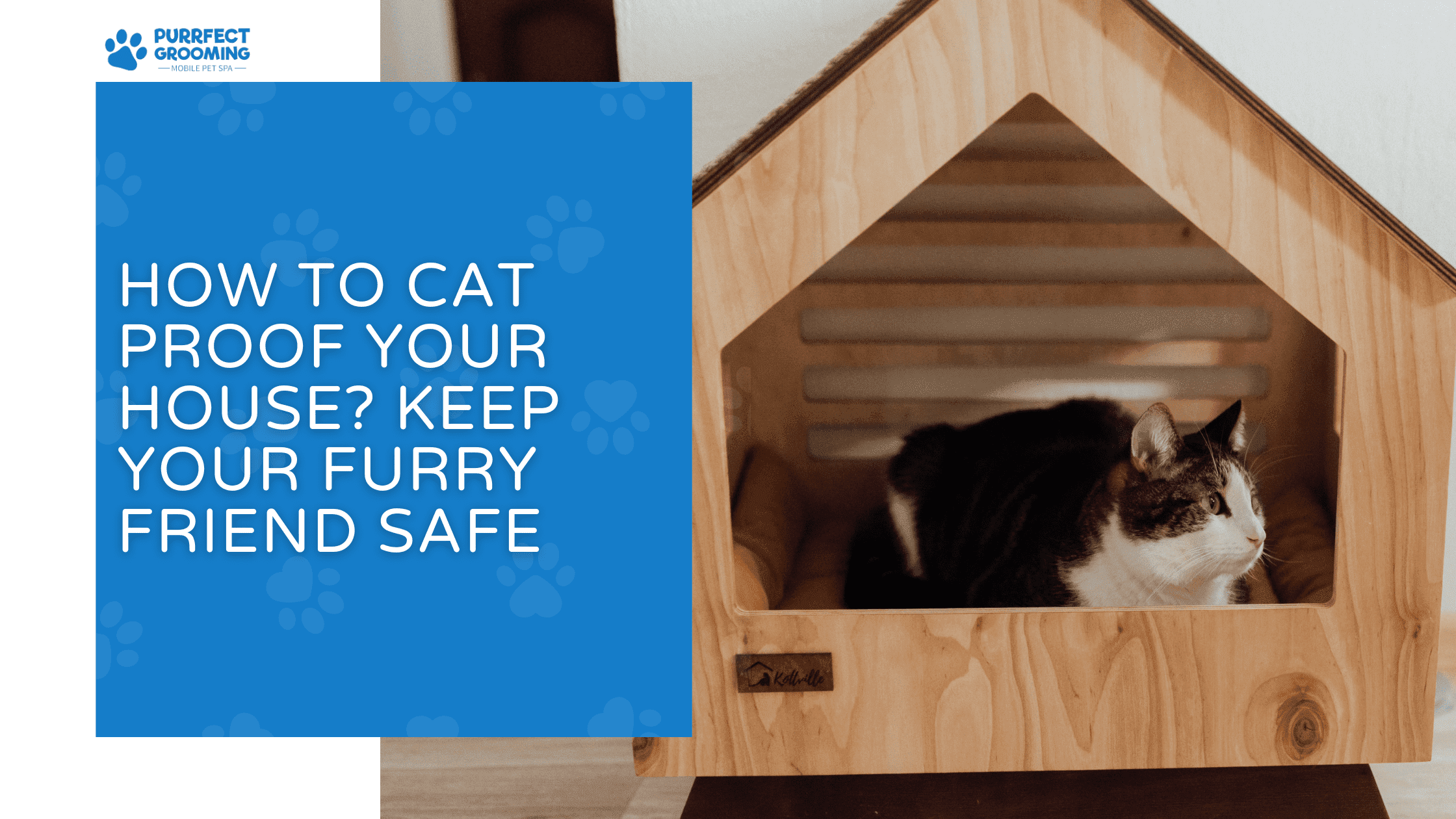How to Cat Proof Your House? Keep Your Furry Friend Safe
Cats are amazing companions, but their curious nature can sometimes get them into trouble. According to the ASPCA, 25% of calls to their Animal Poison Control Center in 2021 involved pets getting into household items like cleaning products and plants. Learning how to cat-proof your house is essential to create a safe and welcoming space for your feline friend.
1. Why Cat Proofing is Necessary
Cats are known for their inquisitive nature, often squeezing into tight spots or playing with things they shouldn’t. Without precautions, everyday household items can become hazardous.
2. Preparing Your Home
Start by inspecting every corner of your home for potential risks. Use the checklist below to ensure every danger zone is addressed.
| Checklist for Cat-Proofing | Action Steps |
| Wires and cords | Use cord covers or hide them. |
| Toxic plants | Replace with cat-safe alternatives. |
| Small objects | Store in drawers or secure boxes. |
| Cleaning supplies | Lock away in cabinets. |
3. Living Room Safety
- Secure Wires and Cables: Cats often chew on exposed wires. Protect cords with cable organizers or covers.
- Store Breakables: Place vases, picture frames, and delicate items on sturdy, high shelves.
| Common Living Room Hazards | Solutions |
| Loose wires | Cable protectors or organizers. |
| Fragile decor | Store on high shelves. |
4. Kitchen and Dining Areas
- Toxic Foods: Foods like onions, garlic, and chocolate are harmful to cats. Store them securely in cabinets or the fridge.
- Cleaning Products: Many cleaning agents contain chemicals dangerous to cats. Always use child-proof locks for under-sink cabinets.
| Toxic Foods for Cats | Safe Storage Tips |
| Onions, garlic, chocolate | Airtight containers or cabinets. |
| Alcohol, coffee, grapes | Keep out of reach in sealed spaces. |
You May Also Like : What Can Cats Eat?
5. Bedroom Adjustments
- Small Objects: Items like jewelry, coins, and hair ties can become choking hazards. Store them in closed drawers.
- Harmful Plants: Plants like lilies should be avoided entirely.
6. Bathroom Precautions
Bathrooms contain hidden dangers like medications and toiletries.
- Close Toilet Lids: Cats may try to drink from toilets, posing drowning risks.
- Secure Medications: Lock away pills and supplements in medicine cabinets.
| Bathroom Hazards | Cat-Proofing Solutions |
| Open toilet lids | Always close after use. |
| Medications on counters | Store in high, closed cabinets. |
7. Windows and Balconies
Windows and balconies can become dangerous if left unsecured.
- Install sturdy screens to prevent your cat from falling.
- For balconies, use protective mesh or enclosures designed for pets.
8. Kid-Proofing for Cats
Teach children to interact safely with cats to avoid accidental injuries. Keep small toys and art supplies in closed containers to prevent choking risks.
9. Plants and Decorations
Not all plants are cat-friendly. Here’s a quick reference:
| Toxic Plants | Safe Alternatives |
| Lilies, philodendrons, azaleas | Spider plants, cat grass. |
| Poinsettias, sago palms | Boston ferns, bamboo palms. |
Decorative items like candles should also be placed out of reach to avoid accidents.
10. Cat-Specific Zones
Give your cat safe spaces to play and relax.
- Cat Trees: Encourage climbing on designated furniture.
- Scratch Posts: Save your furniture by providing scratch posts.
11. Dealing with Common Cat Behaviors
Cats are naturally curious, so it’s important to anticipate their behavior:
- For chewers, offer toys to redirect their attention.
- Climbers will appreciate wall-mounted shelves or platforms.
12. Cleaning and Maintenance
Routine cleaning can prevent potential hazards:
- Vacuum regularly to pick up small, harmful objects.
- Check and maintain all safety measures, such as cord covers and window screens.
13. Emergency Preparation
Preparation is key in emergencies.
- Pet First-Aid Kit: Include bandages, antiseptic, and a digital thermometer.
- Emergency Contacts: Keep your vet’s number and poison control information readily available.
You May Also Like : Why Does My Cat Keep Sneezing?
Pro Tip:
To make your cat-proofing efforts even more effective, introduce your cat to each space gradually and monitor their reactions. This way, you can identify overlooked hazards and adjust accordingly.
Conclusion
Cat proofing your home ensures a safer and happier environment for your feline friend. With a little effort and preparation, you can create a harmonious living space where your cat can thrive.
FAQs
1. How do I start kitten-proofing my home?
Begin by identifying and addressing hazards like loose wires, toxic plants, and open cabinets.
2. What are the most common hazards for cats at home?
Common dangers include exposed cords, toxic foods, and unsecured windows.
3. How can I keep my cat safe on balconies?
Use protective barriers or enclosures to prevent falls or escapes.
4. Are there any cat-proofing tools I should buy?
Look for cord covers, child-proof cabinet locks, and window screens.
5. What should I do if my cat ingests something harmful?
Contact your veterinarian or a poison control center immediately.

